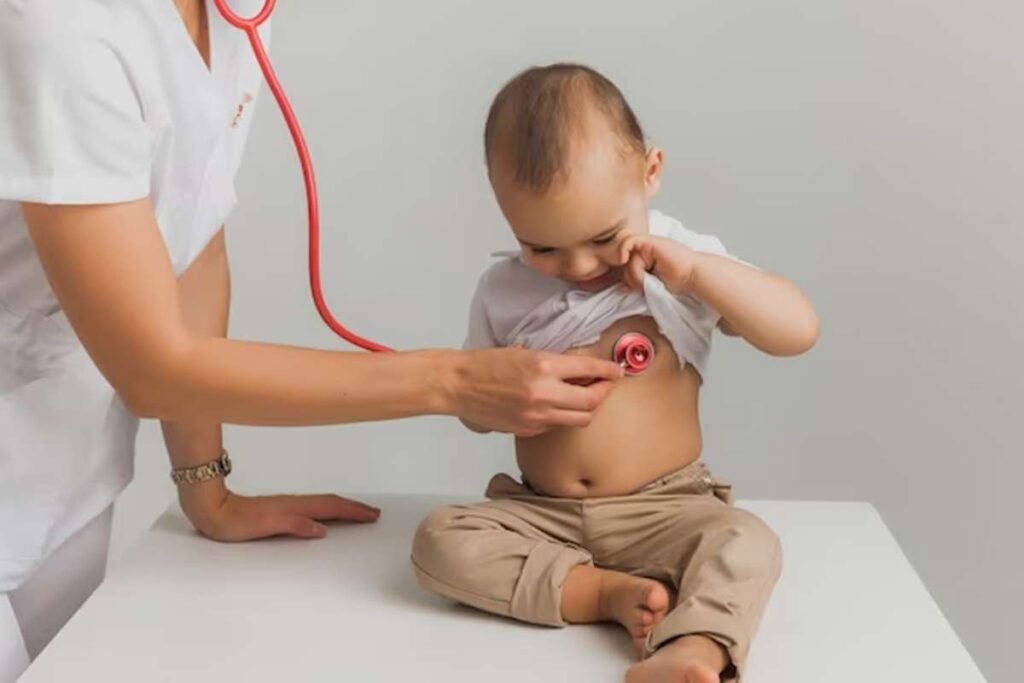A groundbreaking international study has revealed that new predictive models can accurately assess the severity of community-acquired pneumonia (CAP) in children, significantly enhancing clinical decision-making. Conducted across 73 emergency departments in 14 countries, the research involved 2,222 pediatric patients and demonstrated that these models outperform traditional clinical judgment in identifying which children are at greater risk of severe illness.
Led by Dr. Todd Florin of Lurie Children’s Hospital in Chicago and Northwestern University, the study aims to support timely and appropriate care for young patients. “While only a small percentage of children with pneumonia will have severe outcomes, it’s crucial to identify these patients early so clinicians can act swiftly,” Florin said. At the same time, he emphasized the importance of recognizing mild cases to avoid unnecessary testing, treatments, or hospital stays.
The models analyzed data from children aged 3 months to under 14 years with confirmed CAP diagnoses, collected between February 2019 and June 2021. Researchers used outcome-based criteria over a 7-day period post-emergency visit to classify the severity of each case. Severity levels ranged from mild, treated as outpatients or with brief hospital stay,s to severe cases involving intensive care, mechanical ventilation, or death.
Key Predictors and Model Performance
The study found that certain symptoms and vital signs significantly correlated with increased community-acquired pneumonia severity. Indicators such as abdominal pain, refusal to drink, chest retractions, and hypoxaemia (low blood oxygen levels) were among the strongest predictors of moderate or severe illness. Notably, children with oxygen saturation below 90% had a 13-fold higher likelihood of developing severe CAP.
Other predictive factors included elevated respiratory and heart rates, prior use of antibiotics before the emergency department visit, and the presence of chest retractions. Conversely, symptoms like congestion or rhinorrhea were associated with milder cases, suggesting they may help rule out severe illness.
Dr. Nathan Kuppermann of the Children’s National Research Institute, another key investigator, highlighted the significance of this advancement. Until now, we haven’t had a reliable way to predict which children are at real risk of worsening. This model gives clinicians a practical, data-driven tool to guide decisions and improve care,” he said.
The predictive models showed a c-statistic score of 0.82, indicating strong accuracy in distinguishing between mild and more serious cases. Even among children with radiographic confirmation of CAP, the models retained high performance, bolstered by additional predictors like decreased breath sounds and multifocal involvement.
Implications for Clinical Practice and Future Validation
With 5.4% of the study’s participants experiencing severe community-acquired pneumonia , accurate early identification remains critical. The research suggests that these models could soon be integrated into clinical settings, potentially replacing or augmenting subjective clinical assessments. Florin noted that the models “appear to perform better than clinician judgment alone,” referencing previous research from Lurie Children’s Hospital.
Before widespread adoption, the models will require external validation. However, the current results are promising and mark a significant step forward in pediatric emergency care. By offering an evidence-based framework, these tools could reduce unnecessary interventions while ensuring high-risk patients receive timely and appropriate treatment.
As the healthcare industry increasingly embraces data-driven approaches, such predictive models may become essential in managing common yet potentially serious conditions like pediatric pneumonia.









